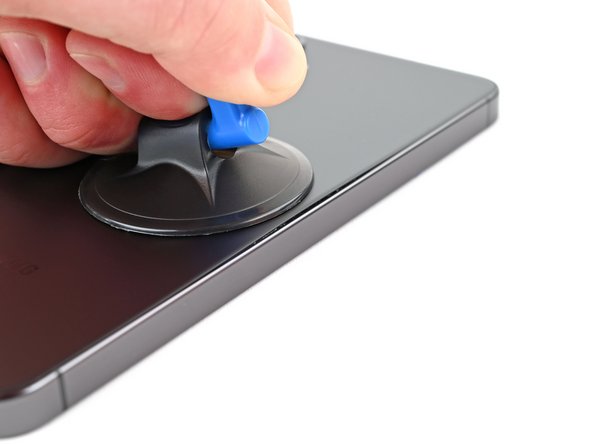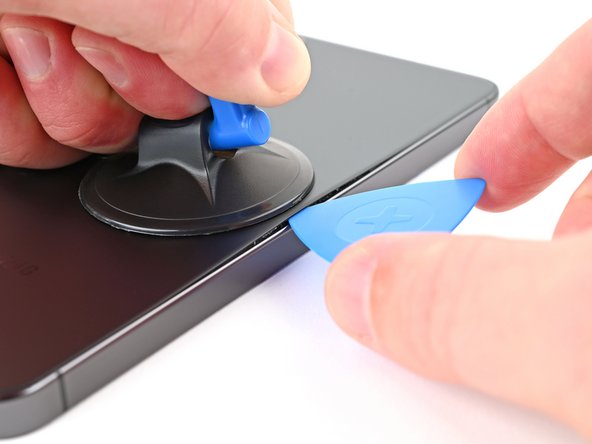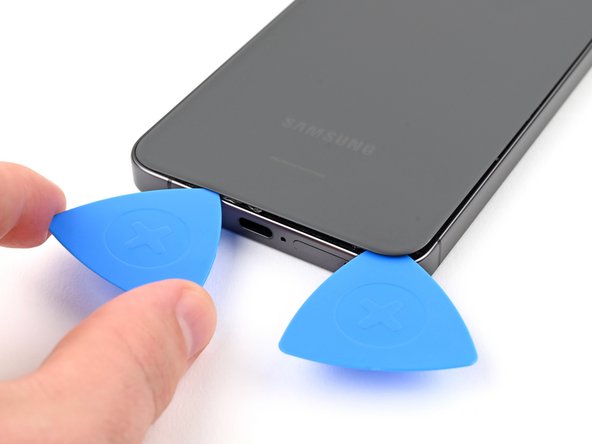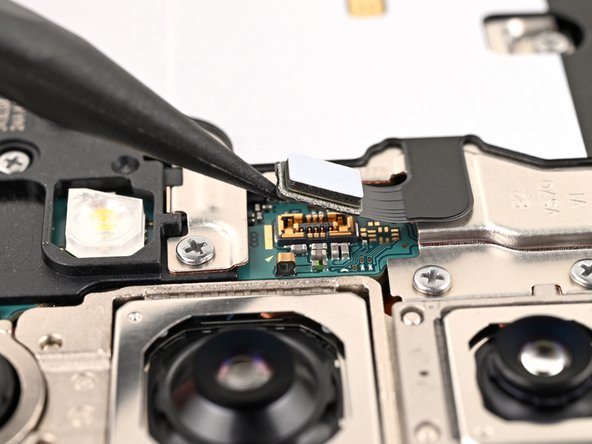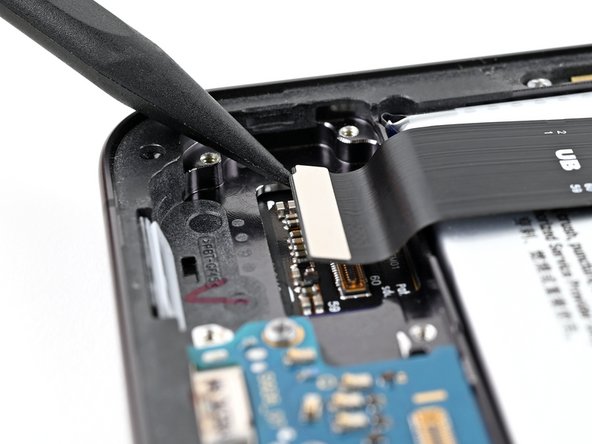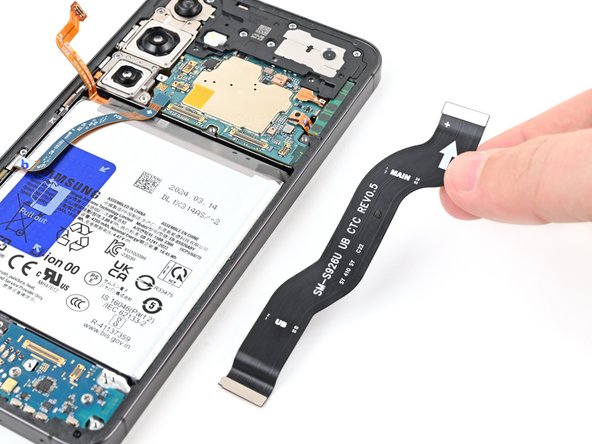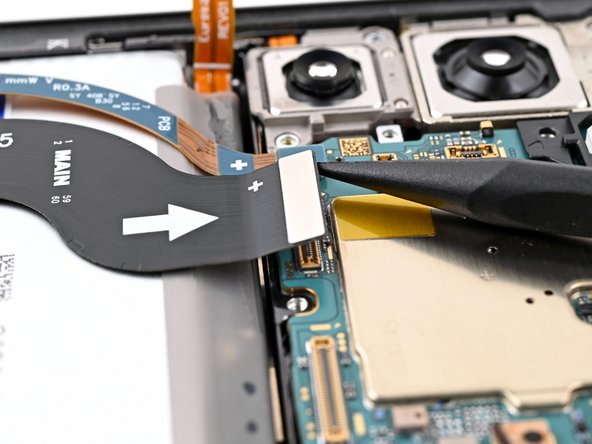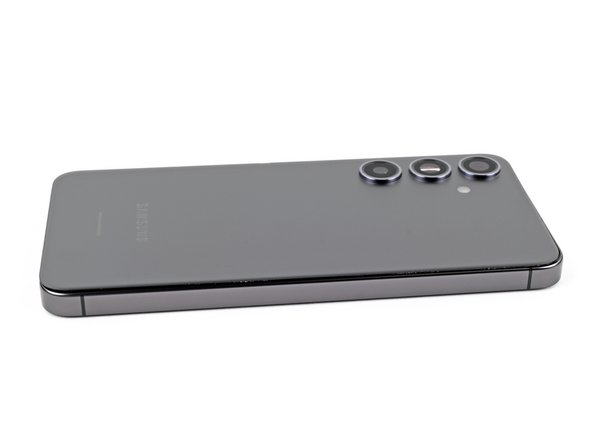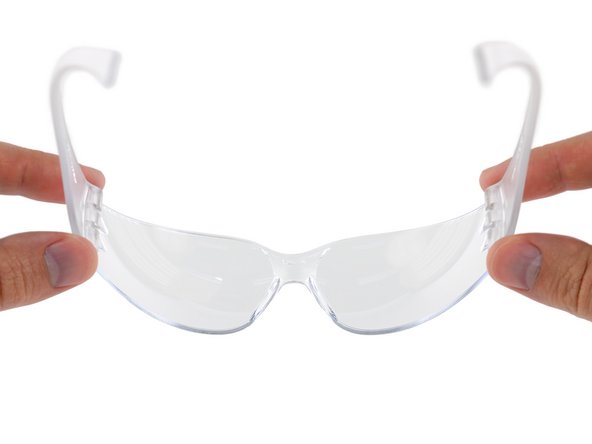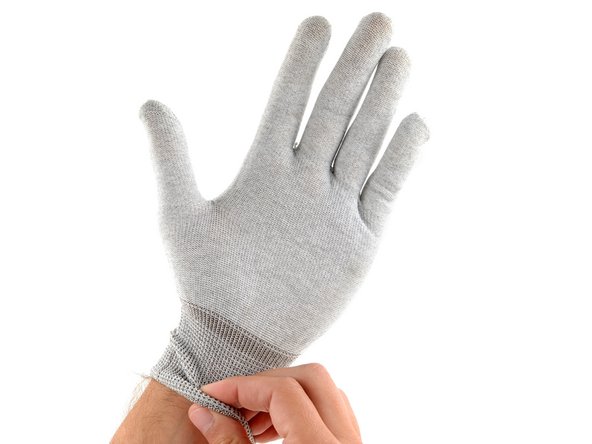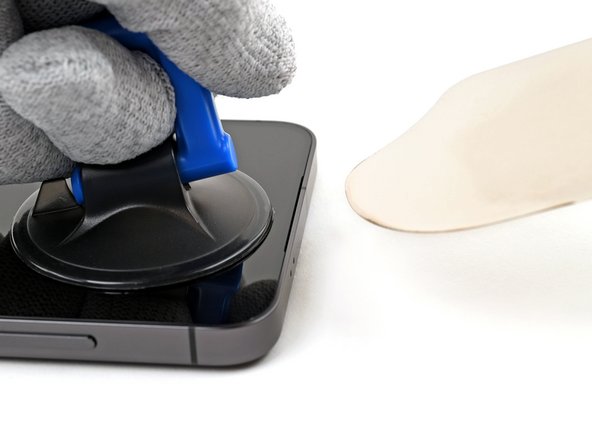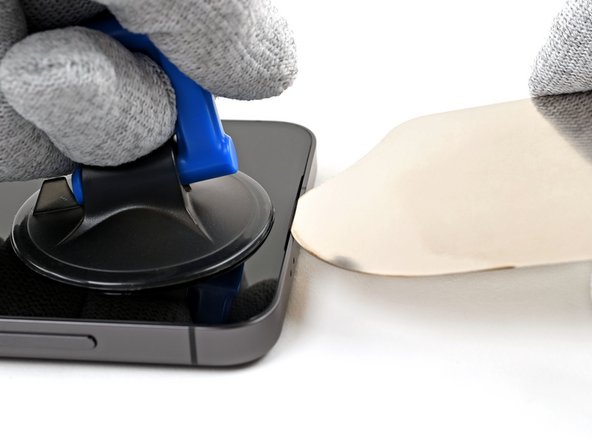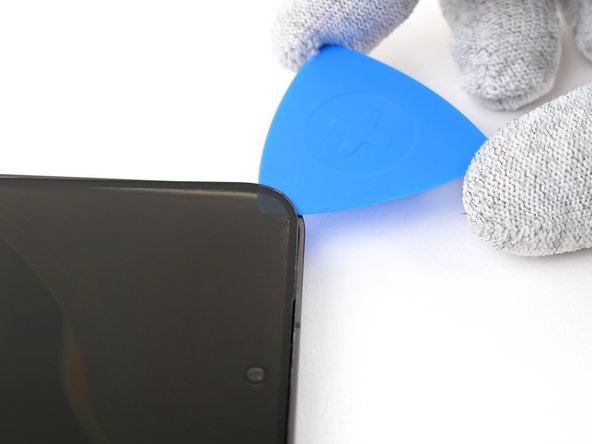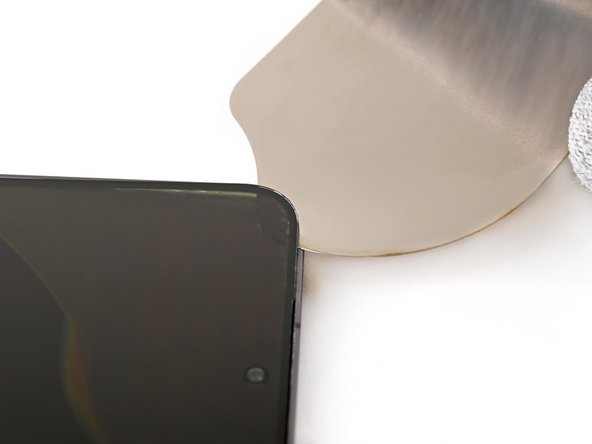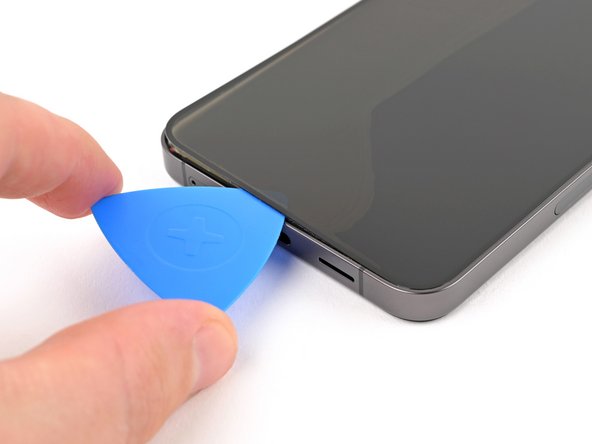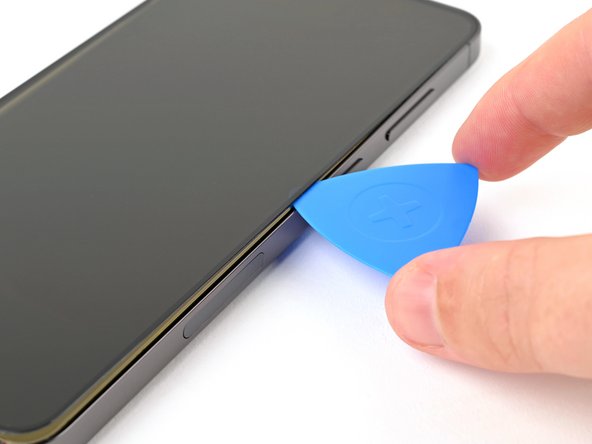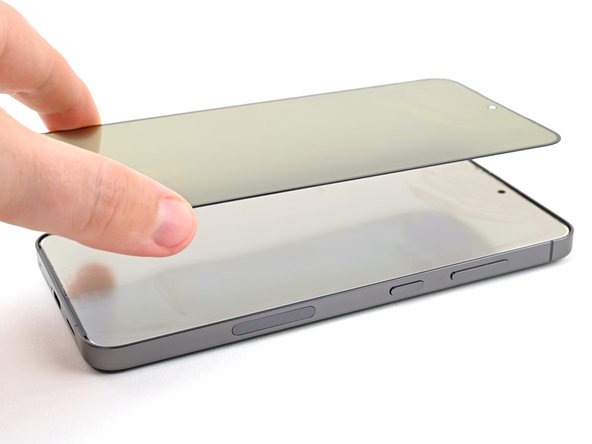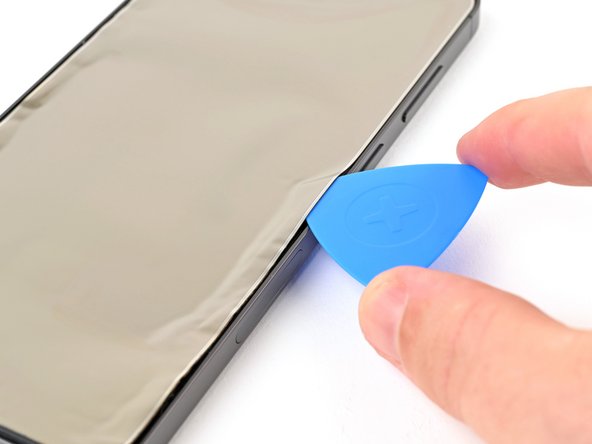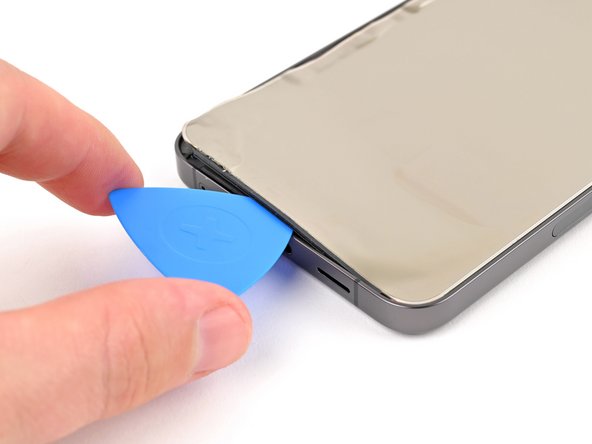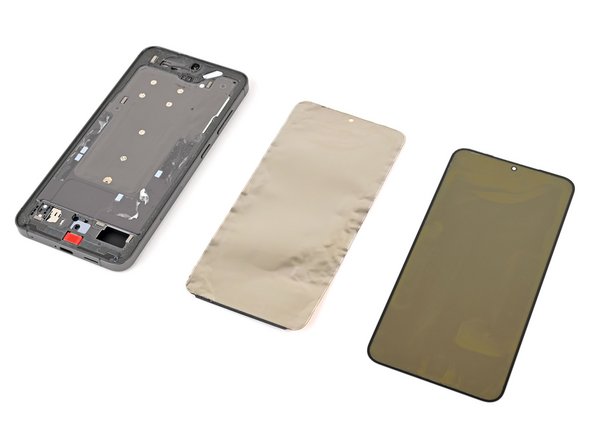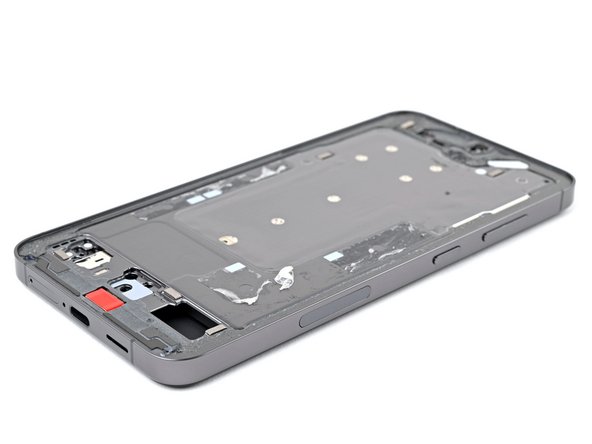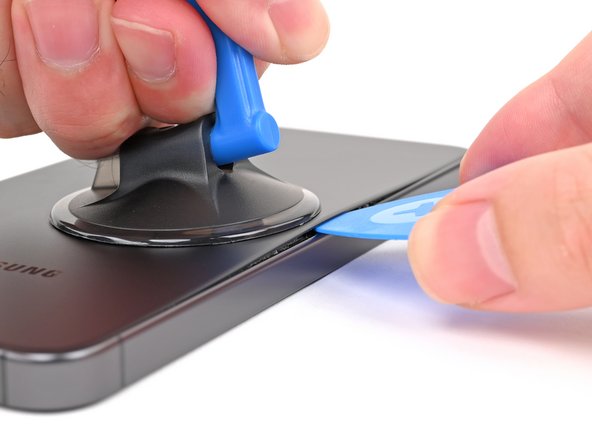Samsung Galaxy S24 Plus Screen Replacement
Duration: 45 minutes
Steps: 32 Steps
This step will take out your old screen, so don’t be surprised if it’s a bit dramatic. Just think of it as making space for the new, shiny display to take center stage.
Ready to swap out the screen on your Samsung Galaxy S24+? This guide will walk you through replacing the front glass and display panel together. Heads up: you’ll need to do both if your glass is cracked, since the screen and glass are fused. Expect your old screen to go out with a bang—it won’t survive this process. If you’re hoping to salvage a screen, this isn’t the route for you.
Step 1
Let your phone's battery dip below 25% before diving in—lithium-ion batteries can be real drama queens when charged. If you spot any swelling, treat it like a tiny balloon animal and handle with extra care.
- Disconnect all cables from your phone—give it some space.
- Press and hold the side button and volume down together, then tap 'Power off' to send your phone off to dreamland.
Step 2
A heat source like a hair dryer, heat gun, or hot plate can help soften adhesive, but be cautious—excessive heat can damage the display and battery inside the device. Keep the heat gentle and controlled to avoid overheating.
- Let's get this repair started! Heat an iOpener and apply it to the right edge of the back cover for about two minutes. This will help loosen things up and make the next steps a breeze.
Tools Used
Step 3
Having trouble making that gap? No worries, just apply a little more heat to soften the adhesive further. Be sure to follow the iOpener instructions to avoid going overboard with the heat!
- Place the suction handle on the back cover, right near the center of the right edge. The closer, the better!
- Pull on the suction handle with a good, firm grip. This will create a small gap between the cover and the frame – just enough to work with.
- Slide an opening pick into the gap and get ready to make some progress!
Tools Used
Step 4
- Gently slide the pick back and forth along the right edge to break free that stubborn adhesive.
- Once you've got it, keep the pick close to the bottom right corner so the adhesive doesn’t make a comeback.
Step 5
- Warm up the bottom edge of the back cover with a heated iOpener for about two minutes—think of it as giving your device a cozy little spa moment before the next step.
Tools Used
Step 6
- Spin that pick around the bottom-right corner like it’s break-dancing—keep it smooth and the glue will give up the ghost.
Step 7
- Pop in a second pick at the bottom right corner to get things started.
- Gently slide the opening pick across to the bottom left corner to break the adhesive seal.
- Leave that pick hanging out in the bottom left corner — it’ll keep the adhesive from sticking back together as you work.
Step 8
- Heat up your iOpener and gently apply it to the left edge of the back cover for two minutes. This will soften things up, making the next step a breeze.
Tools Used
Step 9
- Gently wiggle the opening pick around the bottom left corner to loosen the adhesive. Keep at it until it starts to give way—patience is key here.
Step 10
- Pop in a third pick at the bottom left corner to get things started.
- Gently slide that pick up toward the top left corner to loosen the adhesive's grip.
- Keep that pick near the top left to stop the adhesive from sealing back up. If you need a hand, you can always schedule a repair.
Step 11
- Warm up the iOpener and place it on the top edge of the back cover for a cozy two minutes.
Tools Used
Step 12
- Swing that opening pick around the top left corner like you're scooping ice cream, and watch that adhesive let go!
Step 13
- Place a fourth pick at the top left corner to get started.
- Gently slide the pick toward the top right corner to break the adhesive's grip.
- Keep the pick near the top right corner to stop the adhesive from resealing itself.
Step 14
Check out the adhesive square hugging the rear microphone, just above the flash. It's holding things together like a little sticky bodyguard.
- Let's get started! Align the tip of your opening pick with the flash, and gently slide it under the top of the back cover until you feel it catch on the adhesive.
- Keep sliding that pick towards the bottom of the phone, and as you do, carefully lift the cover until it's free from the adhesive.
- You're making great progress! Continue to slide the pick under the cover, working your way around the phone until the cover is completely removed.
Step 15
- Start by carefully removing the back cover. During reassembly, use tweezers or your fingers to gently lift off all adhesive from both the back cover and the device itself. If the adhesive is stubborn, warm it up a bit or apply some isopropyl alcohol (90% or higher) with a coffee filter or lint-free cloth to make removal easier. If you're working with custom-cut adhesives, just follow this guide for best results. Need a hand? You can always schedule a repair with Salvation Repair.
If the back cover isn't coming off easily, try gently working around the edges with an opening pick to loosen any glue or adhesive that might have resealed — patience is key. Once it's open, it's a good idea to power on your device and run through all functions to make sure everything's working smoothly before sealing it back up. Just remember to shut it down completely before continuing. Keep in mind, reapplying the adhesive well is what helps keep water out, but the device may not maintain its full IP rating after the repair. If you need a hand with any step, you can always schedule a repair to get it done professionally.
Tools Used
Step 16
Check out the arrows printed on the board next to each press connector—they point you right to the spot where you should pry. Easy does it!
- Grab a spudger and gently pry up the wireless charging coil press connector from the motherboard. When reconnecting, line up the connector carefully over its socket and press down with your fingertip—start on one side, then the other—until you hear a click. No need to force it; if it doesn’t seat right away, reposition and try again. If you need a hand, you can always schedule a repair.
Tools Used
Step 17
- Grab your Phillips screwdriver and unscrew the thirteen 3.5mm screws holding down the wireless charging coil and loudspeaker:
- Six screws are keeping the wireless charging coil in place.
- Seven screws are securing the loudspeaker.
Step 18
- Grab your trusty spudger and gently slide the tip into the notch at the top left corner of the loudspeaker, where you'll see a little arrow pointing the way.
- Now, give it a gentle pry to unclip the loudspeaker from the frame. You've got this!
Tools Used
Step 19
- Gently lift the loudspeaker away from the frame using your fingers—no need to be too aggressive here.
- Next, remove the wireless charging coil and the loudspeaker from the frame, keeping everything organized.
- When putting it all back together, press gently around the edges of the loudspeaker to clip it into place before screwing it down. A little patience goes a long way!
Step 20
- Grab a spudger and gently wedge it to lift and disconnect the display cable press connector near the bottom edge of the phone. If you need help, you can always schedule a repair.
Tools Used
Step 21
- Grab a spudger and gently pry up the display cable press connector from the motherboard. Next, carefully remove the display cable itself. If you need a hand with this or any other step, you can always schedule a repair.
Tools Used
Step 22
Don't worry about adding new adhesive just yet - you'll be removing the back cover again soon to wrap up the reassembly process. The old adhesive will hold everything in place while you swap out the screen.
- Place the back cover back on the frame to keep the battery and internal parts safe from harm.
- Flip your device over so the screen faces up and you're ready to continue.
Step 23
Keep it cool—don't go overboard with the heat, or your battery might call it quits.
- Grab your hair dryer or heat gun and warm up the top edge of the screen—you're aiming for 'almost too hot to touch.'
Tools Used
Step 24
Find a nice, clean spot near the top edge that’s big enough for your suction cup to grab onto.
- Got a seriously shattered screen? Cover it up with overlapping strips of packing tape to keep your fingers safe and make the next steps a breeze.
Step 25
Heads up! When you're popping off the front glass, show a little love to your fingers and your device—play it smart and stay safe.
The gap between the front glass and frame is super tight. Grab a thin, rigid tool like an iFlex to help you get started and create a tiny gap to work with.
- Metal tools like the iFlex are sharper than your favorite chef’s knife—so don’t grab them by the edges unless you’re really into band-aids.
- Glass shards can take flight when you’re working with front glass, so toss on some gloves and safety glasses. Your fingers and eyeballs will thank you.
Tools Used
Step 26
Slide the iFlex or a similar tool in just enough to crack open a tiny gap between the glass and the display panel—no need to go deep-sea diving here. Going too far could give your front-facing camera a bad day, so keep it shallow and gentle.
As you lift the front glass, you'll notice some funky discoloration on the display panel underneath. Don't worry—this is totally normal. You'll get to remove the display panel in a later step, so just keep cruising!
- Stick a suction handle right at the top edge of your screen—get as close to the edge as you can.
- Slide the iFlex or a similar tool at a downward angle into the little gap between the front glass and the frame up top.
- Give the suction handle a good, steady pull to lift the glass, while you gently push the iFlex between the glass and the display. Slow and steady wins the screen separation race!
Tools Used
Step 27
While an iFlex works for the next step, grabbing a plastic opening pick makes it easier and safer—less chance of shattering the glass. Keep it gentle and steady, and you'll get through it smoothly. If you need a hand, you can always schedule a repair.
- Gently rotate the iFlex or similar tool around one of the top corners of the front glass until a gap opens up enough to slide in an opening pick.
- Slide an opening pick into the gap and carefully remove the iFlex tool.
Step 28
If the sticky stuff is being stubborn, grab a hair dryer or heat gun and warm up the edges of your phone until they’re nice and toasty.
- Glide the opening pick smoothly around the edges of the front glass, working your way through the sticky adhesive holding it to the frame. Take your time—slow and steady wins the race!
Tools Used
Step 29
- Gently lift the front glass off the frame and set it aside. Keep it safe—this step is all about patience and a light touch.
Step 30
If the adhesive is playing hard to get, grab a hair dryer or heat gun and give the display a gentle warm-up—the glue will loosen and stop being such a clingy ex.
- Slide an opening pick gently under the edge of the display panel—think of it like giving your device a little nudge to wake up, but with style.
Tools Used
Step 31
The display panel's bottom edge has some components attached to it. Gently slide the opening pick underneath these components to get started.
- Gently slide a plastic opening tool around the edges of the display to loosen the adhesive holding it in place. Keep it steady and patient—this step takes a bit of finesse. If you need a hand, you can always schedule a repair.
Step 32
Grab an opening pick and slide it under the display panel to loosen up that sticky adhesive. Take it slow around the front camera—no need for any accidental selfies!
- To put your device back together, just walk these steps backwards—like a moonwalk, but with tools.
- If things didn’t go smoothly, give some troubleshooting a whirl, or drop by our Answers community for a helping hand.
- Finished up? Make sure any leftover parts and old devices find their way to an R2 or e-Stewards certified recycler. If you’re stuck, you can always schedule a repair.







